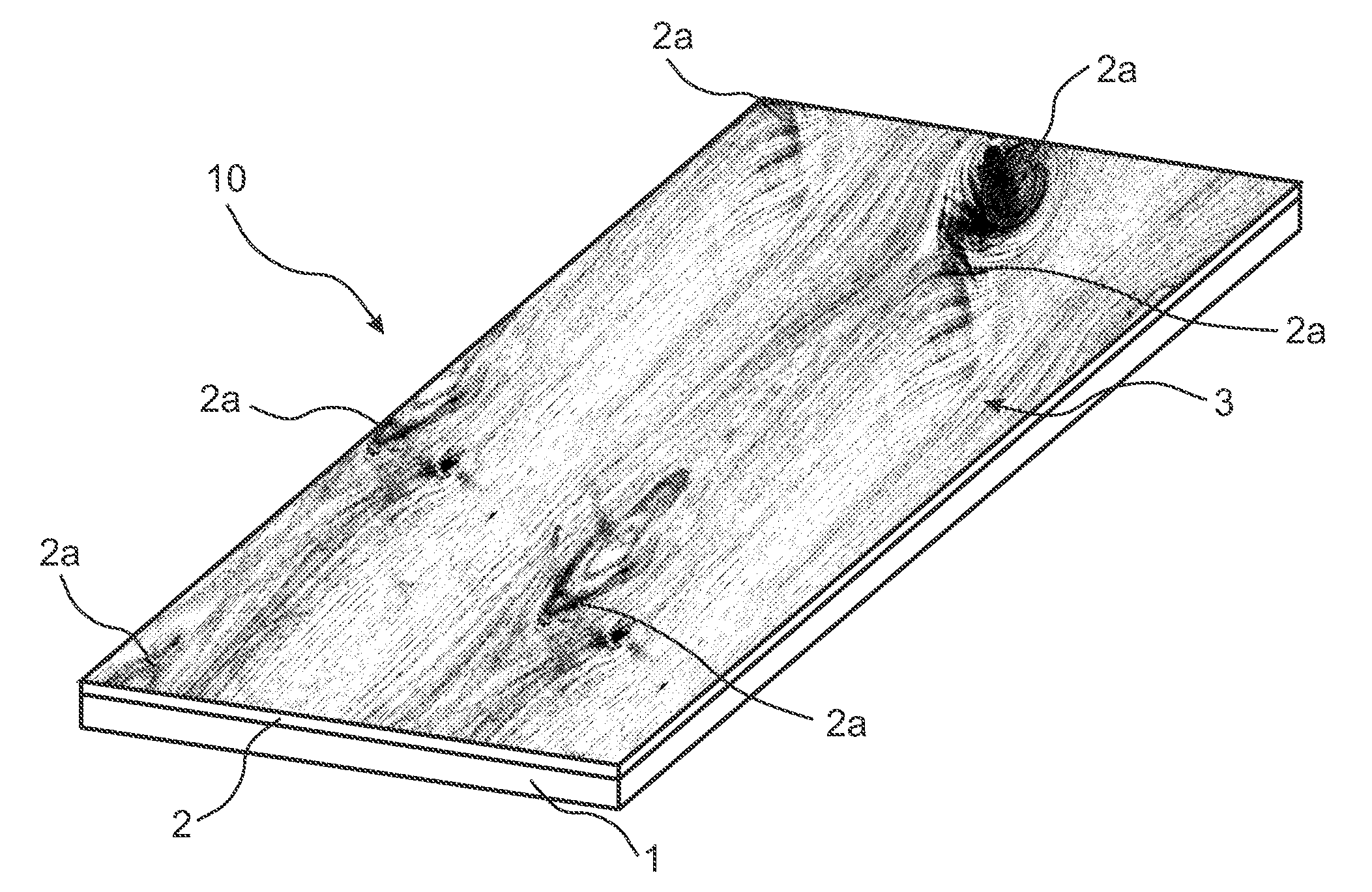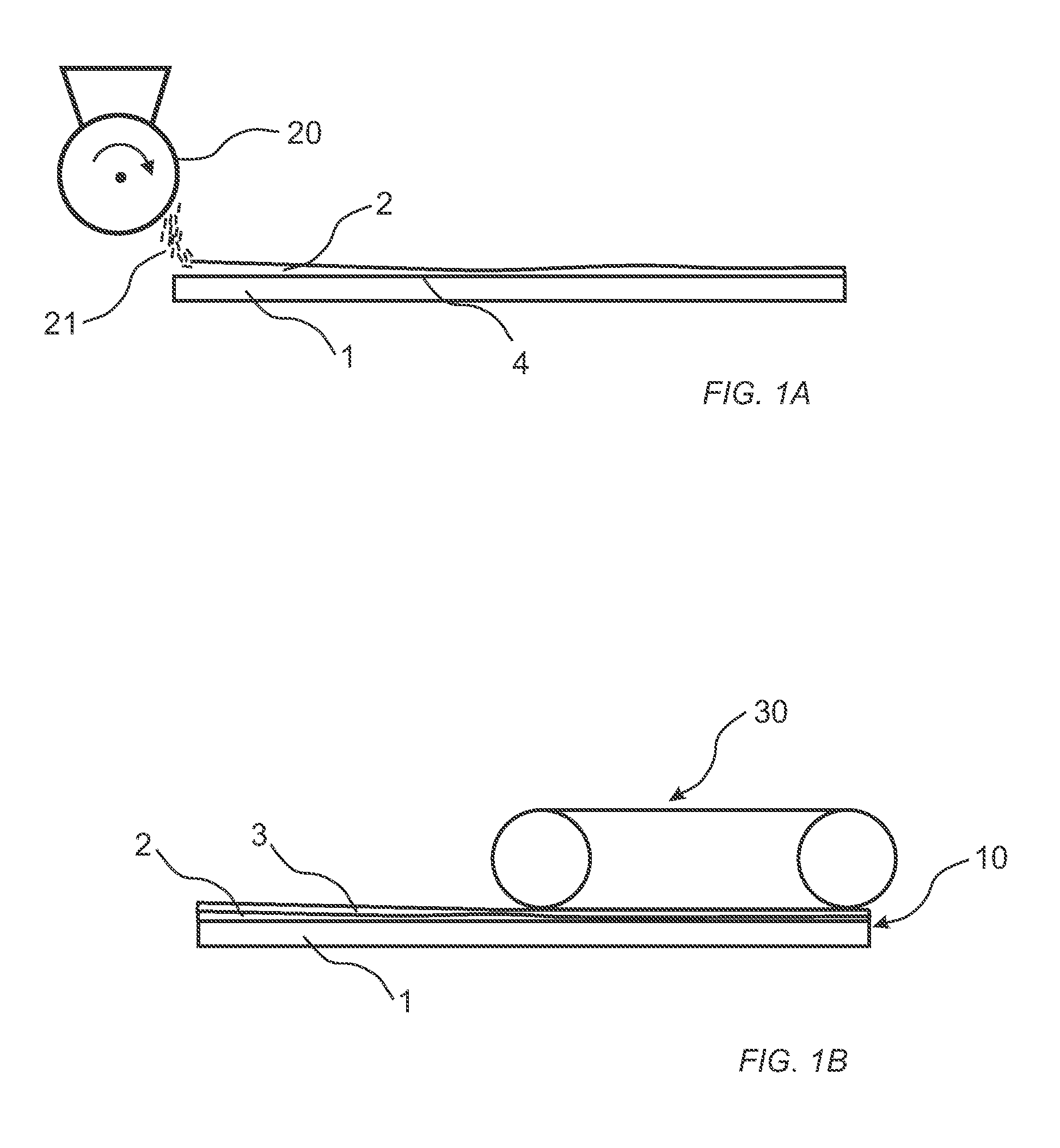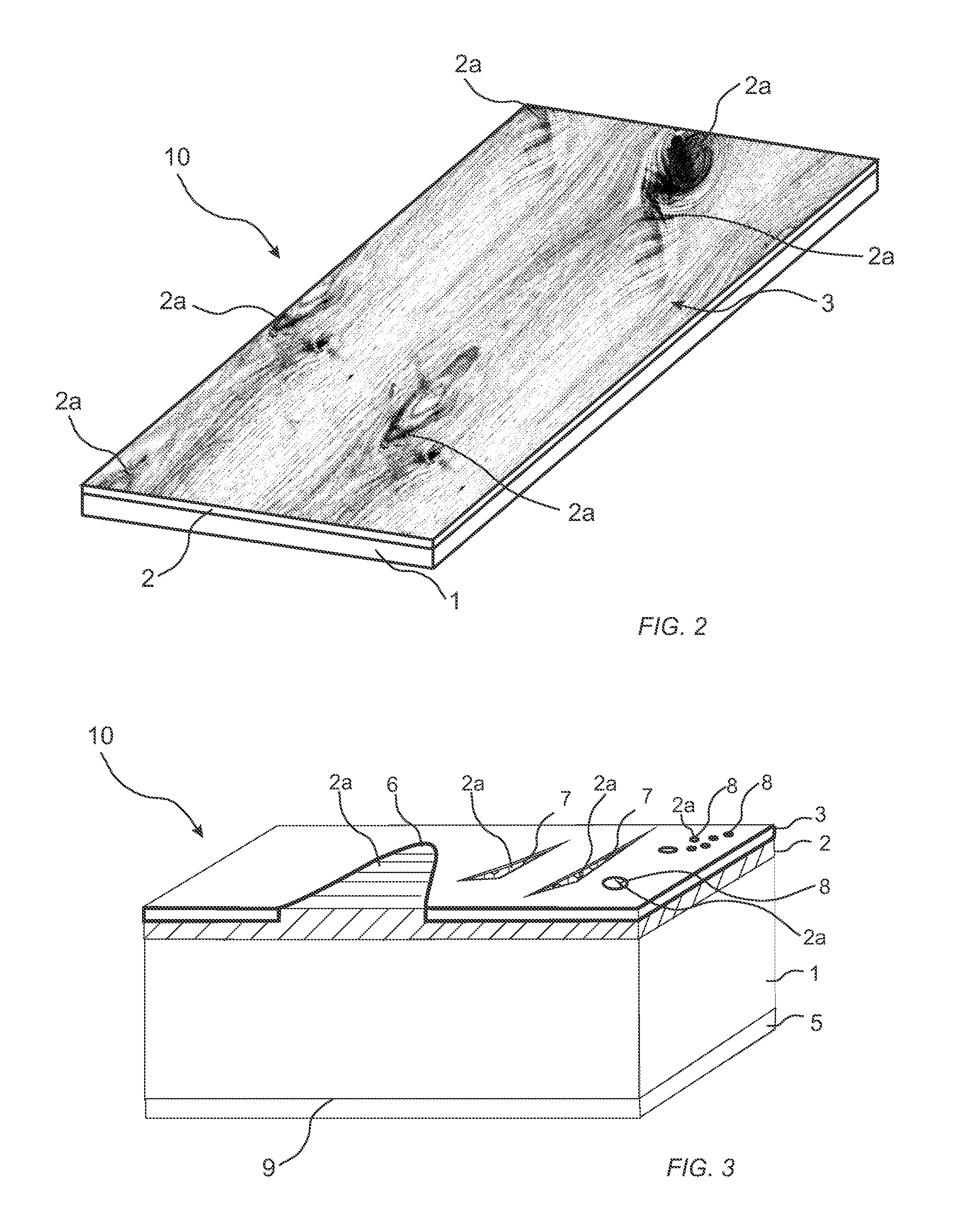Method of producing a veneered element
a technology of veneered elements and veneers, which is applied in the field of producing veneered elements, can solve the problems of high production cost, low impact resistance of wood veneer, and inability to sand the wood veneer layer, so as to reduce the flow of the sub-layer, reduce the amount of free binder, and reduce the fluid pressure
- Summary
- Abstract
- Description
- Claims
- Application Information
AI Technical Summary
Benefits of technology
Problems solved by technology
Method used
Image
Examples
example 1
[0162]400 g / m2 of a powder mixture, comprising 40 wt-% wood fibres, 10 wt-% aluminium oxide (Alodur ZWSK 180-ST), 49.5 wt-% melamine formaldehyde resin (Kauramin 773) and 0.5 wt-% of carbon black (Printex 60), was scattered on a 10.0 mm HDF board for forming a sub-layer. The powder layer forming the sub-layer was sprayed with 20 g / m2 of an aqueous solution of a release agent (PAT-660). A 0.6 mm oak veneer layer was positioned on the sub-layer prior to pressing the assembly in a short cycle press for 30 seconds at 40 bar with a press plate temperature of 160° C. The resulting product was a veneered HDF having pores and cracks in the veneer layer filled with the cured powder mixture of the sub-layer.
example 2
[0163]800 g / m2 of a powder mixture, comprising of 40 wt-% wood fibres, 10 wt-% aluminium oxide (Alodur ZWSK 180-ST), 49.5 wt-% melamine formaldehyde resin (Kauramin 773) and 0.5 wt-% of carbon black (Printex 60), was scattered on a 10.0 mm HDF board for forming a sub-layer. The powder layer forming the sub-layer was sprayed with 20 g / m2 of an aqueous solution of a release agent (PAT-660). A 0.6 mm oak veneer was positioned on the sub-layer prior to pressing the assembly in a short cycle press for 30 seconds at 40 bar with a press plate temperature of 160° C. The resulting product was a veneered HDF having cracks and an increased amount of pores in the veneer layer filled with the cured powder mixture of the sub-layer in comparison with the product of example 1.
example 3
[0164]400 g / m2 of a powder mixture, comprising 17.5 wt-% wood fibres, 17.5 wt-% mineral fibres 10 wt-% aluminium oxide (Alodur ZWSK 180-ST), 52,5 wt-% melamine formaldehyde resin (Kauramin 773) and 0.5 wt-% of carbon black (Printex 60), was scattered on a 10.0 mm HDF board for forming a sub-layer. The powder layer forming the sub-layer was sprayed with 20 g / m2 of an aqueous solution of a release agent (PAT-660).
[0165]A 0.6 mm oak veneer was positioned on the sub-layer prior to pressing the assembly in a short cycle press for 30 seconds at 40 bar with a press plate temperature of 160° C. The resulting product was a veneered HDF having cracks and a decreased amount of pores in the veneer layer filled with the cured powder mixture of the sub-layer in comparison with the product of example 1.
PUM
| Property | Measurement | Unit |
|---|---|---|
| thickness | aaaaa | aaaaa |
| thickness | aaaaa | aaaaa |
| thick | aaaaa | aaaaa |
Abstract
Description
Claims
Application Information
 Login to View More
Login to View More - R&D
- Intellectual Property
- Life Sciences
- Materials
- Tech Scout
- Unparalleled Data Quality
- Higher Quality Content
- 60% Fewer Hallucinations
Browse by: Latest US Patents, China's latest patents, Technical Efficacy Thesaurus, Application Domain, Technology Topic, Popular Technical Reports.
© 2025 PatSnap. All rights reserved.Legal|Privacy policy|Modern Slavery Act Transparency Statement|Sitemap|About US| Contact US: help@patsnap.com



